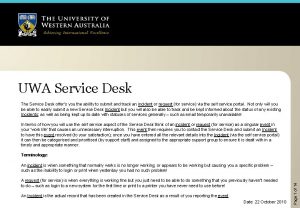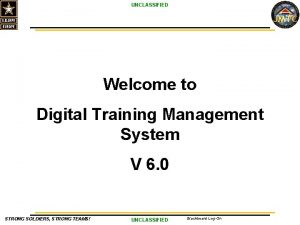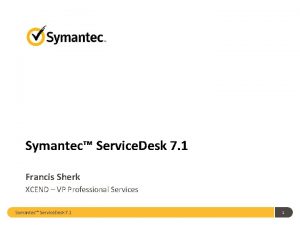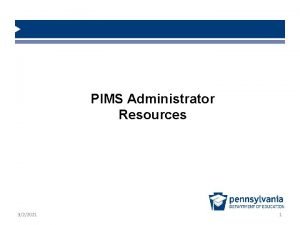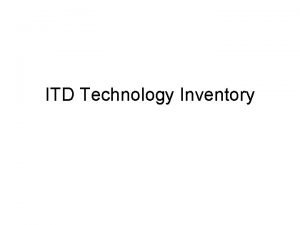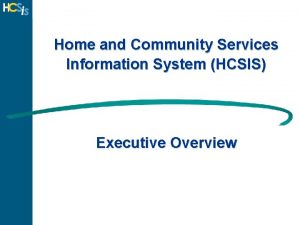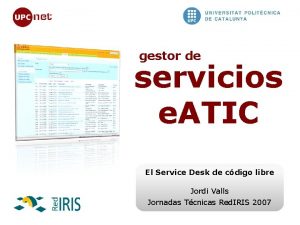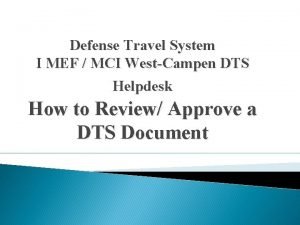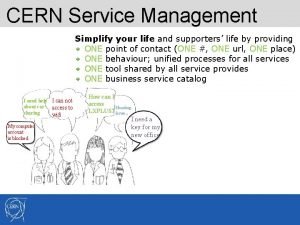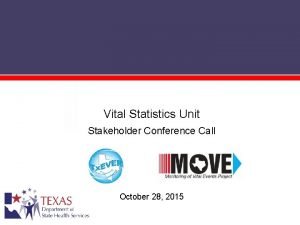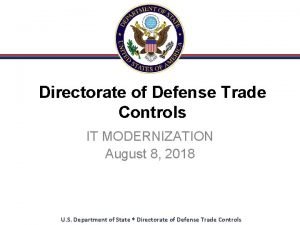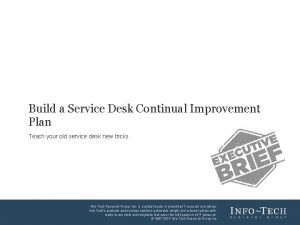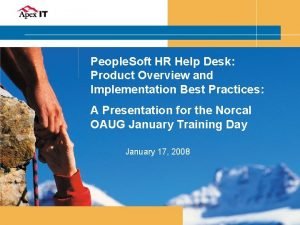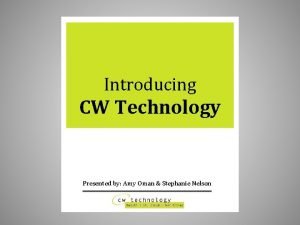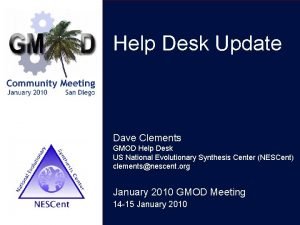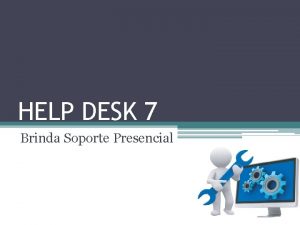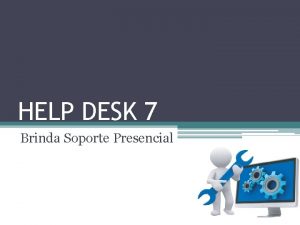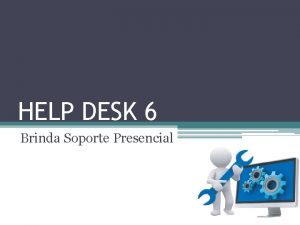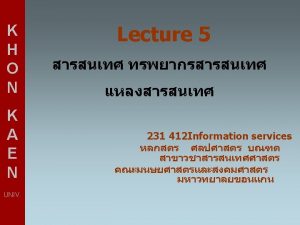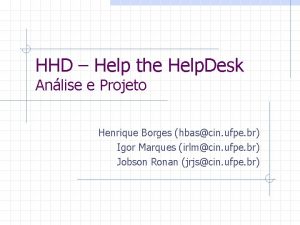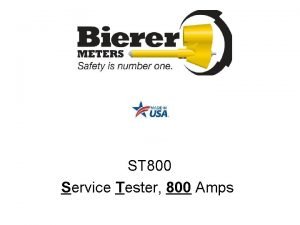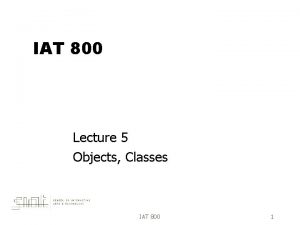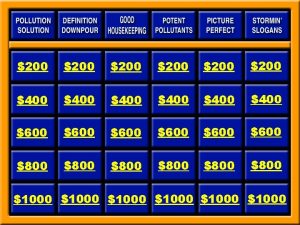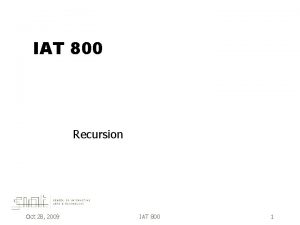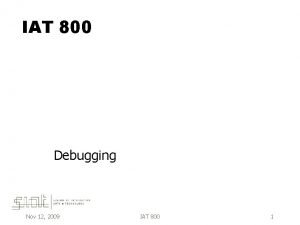Need Help with Todays Program Help Desk 800






























- Slides: 30

Need Help with Today’s Program? • Help Desk: 800 -442 -4614 • Phone in to today’s program – Toll: 630 -424 -2356 – Toll Free: 855 -947 -8255 – Passcode: 6774570# • Program will be archived: http: //fyi. uwex. edu/safepreserving/

Tips for a Successful Year of Food Preservation Lunch & Learn 12 noon to 1 pm May 12, 2014

Tips for a Successful Year • • • Stay informed Use up –to- date, tested recipes Try something new Ask for expert advise Have fun!

A New Year: A New Look (and plenty of ways to stay informed) • Blog posts • Recipes • Video workshops • Lunch & Learns Safe & Healthy: Preserving Food at Home http: //fyi. uwex. edu/safepreserving/

Tips for a Successful Canning Season 1) Start with a research-tested recipe. Just because a recipe is in print, doesn’t mean it’s safe for you and your family. 2) Use up-to-date recipes. We all want to continue with those triedand-true recipes, but canning recommendations can, and do, change! 3) Start with equipment in good working order. Test equipment before use. Be sure to test dial canners! 4) Assemble jars, lids and other equipment. Use jars, lids and other equipment designed for home food preservation. 5) Leave your creativity behind. Follow an up-to-date, tested recipe.

Resources for You! Extension recipes are designed to help you prepare safe, high quality foods for family and friends. • UW-Extension http: //fyi. uwex. edu/safepreserving/ • National Center for Home Food Preservation www. uga. edu/nchfp o How do I…. Can? Freeze? Pickle? • University of Georgia publications o So Easy to Preserve (Book and Video) o www. setp. uga. edu • Ball Canning www. freshpreserving. com

Getting Started…Recipes • Use ONLY up-to-date, research-tested recipes! Current canning instructions date from 1994, with minor modifications in 2009 • Don’t (necessarily) do what Mom said (or did)! o Add ACID to tomato products when canning o Avoid using ALUM in pickling o Use LIME with care when making pickles o Be sure to include a heat-processing step as part of each home canning recipe. • No tested recipe…. no problem. Prepare the recipe and store refrigerated or frozen. 7

Safe Adaptations - Canning • Canning vegetables, tomato products, meat or quickprocess pickles – salt can be reduced or eliminated without compromising safety. • Canning fruits, tomato products, or quick-process pickles - sugar may be reduced or eliminated. Follow tested recipes when using sugar substitutes in jams and jellies. • Canning vegetables or meat - a small amount of lowacid ingredients (garlic, herbs) can be added to each jar. • Canning tomatoes - you may substitute yellow tomatoes, always adding acid to ensure a safe product.

More Safe Adaptations • Canning salsa or pickles - products that are mixtures of low-acid ingredients like peppers and onions, and acidic ingredients like tomatoes or acid, you may safely reduce the amount of low-acid ingredients, but the amount of acid, or acidic ingredients, should not be changed. • Canning salsa - you can freely substitute cup-for-cup hot peppers for sweet peppers and vice versa. Do not substitute corn or black beans for other ingredients in an approved salsa recipe, an unsafe product may result.

Don’t Make these Changes • Don’t change the proportion of salt in a tested in a sauerkraut or genuine dill pickle recipe. The exact proportion and type of salt are critical for safety. • When making pickles or salsa, do not change the proportion of vinegar to other ingredients in the recipe – add sugar, if the product is too sour. • Do not attempt to can low-acid foods such as cabbage, summer squash, or wild mushrooms where there are no tested recipes. • Do not substitute low-acid vegetables such as carrots or peppers for acidic fruits in jam or jelly recipes.

Getting Started…Canners Boiling Water Canners • Use for naturally high acid foods (most fruits) or acidified foods (pickles, salsa) • A rack is needed to lift jars off the bottom • Use with a tight-fitting lid • Processes food at 212°F 11

Getting Started…Canners Pressure Canners • Use for low acid foods (meat, vegetables) • Dial gauge – checked every year for accuracy! • Weighted gauge are not checked • Fitted with a rack • Gasket should be replaced when worn. Do not store the gasket in the lid! Do not oil the gasket! • Processes food at 240°-250°F 12

2 Types of Pressure Canners Weighted Gauge Canner & Gauge. These are NOT tested. Dial Gauge Canner & Tester

How do we know which canning method to use? What is the p. H (acidity) of the food? below p. H 4. 6 above HIGH Acid Boiling Water Canning Fruits, Pickles, Salsa LOW Acid Pressure Canning Meat, Vegetables 14

What if…. . For high acid foods you didn’t have to: • Wait for all that water to boil? • Use so much water? • Take so much time to process food? Introducing…. The Atmospheric Steam Canner Lack of research means that Extension does not currently support the use of atmospheric steam canners.

New Research on Steam Canning • How does the steam canner work? • How does the steam canner compare to the boiling water canner? • Can consumers safely can products in an atmospheric steam canner?

How Does a Steam Canner Work? Heat distribution in a boiling water canner (BWC) and in an atmospheric steam canner (ASC). • 3 thermocouples in the BWC water column. • 4 thermocouples in the ASC, including at the vents.

The BWC and the ASC Work…Differently (but not by much) Jar Size Product Temp at Filling BWC – Time to Heat to Boiling ASC – Time to Heat to Boiling Quart 75° F 180° F 12 min 8 min 6 min 3 min Pint 75° F 180° F 9 min 8 min 10 min 9 min Half-Pint 75° F 180° F 9 min 8 min • BWC started at 180°; ASC canner started at 75° • The time for the ASC to heat to boiling with Quart jars was dramatically shorter than in the BWC, regardless of product temperature. But was not different for other jar sizes. • The longest time overall was when each canner was operated full (complete data set now shown. )

Heat Distribution in the Product • • Cranberries in heavy syrup Applesauce Tomato juice Chocolate raspberry dessert sauce

How Temperature is Measured 200 (A) Temperature (°F) 190 180 ASC BWC 170 160 150 140 130 120 0 • 8 pint jars per canner • Each with a recording thermocouple at the cold spot 20 40 60 Time (min) 80 100 • Applesauce – 1 trial • 1 st arrow – process starts • 2 nd arrow – jars removed from canner 120

Calculated Lethality 200 (A) 190 Temperature (°F) 180 ASC 170 BWC 160 150 140 130 120 0 20 40 60 Time (min) 80 100 • Time until process beings (come-up time) (green) • Processing time (red) • Cooling time on the counter (blue) 120

What Contributes to Lethality? Boiling Water Canner 100% 90% 80% 70% 60% 50% 40% 30% 20% 10% 0% (A) Cooling Heating 90% % Total Lethality (min) %Total Lethality (min) Steam Canner (B) 80% 70% 60% 50% Cooling 40% Heating 30% 20% 10% 0% AS TJ CH RC • Contribution of ‘come-up’ time to lethality is too small to ‘count. • Lethality on cooling is significant, (50 -90%) regardless of product and canner type.

Integrated Lethality Food Product Canner Type Total Lethality (min) Spore Death E. coli O 157: H 7 Death Applesauce ASC BWC 146 197 2 3 642, 000 495, 000 Tomato Juice ASC BWC 3212 2477 41 32 28, 400 39, 400 Cranberries (15 min process) ASC BWC 2237 2485 29 32 447, 000 497, 000 Raspberry Choc Sauce ASC BWC 452 3593 6 46 90, 400 719, 000 (15 min process) (35 min process) (10 min process) Integrated total lethality • BWC ~ ASC when processing applesauce, cranberries, tomato juice • BWC >> ASC when processing chocolate raspberry dessert sauce

Calculated Lethality vs Reality Food Product Canner Type Spore Death E. coli O 157: H 7 Death Applesauce ASC BWC 2 3 642, 000 495, 000 Tomato Juice ASC BWC 41 32 28, 400 39, 400 Cranberries (15 min process) ASC BWC 29 32 447, 000 497, 000 Raspberry Choc Sauce ASC BWC 6 46 90, 400 719, 000 (15 min process) (35 min process) (10 min process) Our targets • Spore death > 5 – important ONLY for tomato products • E. coli O 157: H 7 death > 5 ALL process achieved more than enough lethality! Other factors such as seal tightness were not different.

Canner Research Conclusions • An atmospheric steam canner heats differently from a boiling water canner. • Lethality BWC ~ ASC when processing applesauce, cranberries and tomato juice. • Lethality BWC >> ASC when processing chocolate raspberry dessert sauce. • Regardless either process achieved more than enough lethality of the target pathogen, and jars sealed equally well. We anticipate that we will be able to conclude that consumers can use the ASC in place of a BWC for USDA-tested recipes with no modifications…pending USDA approval.

What can we tell consumers? new slide We anticipate that consumers will be able to use an Atmospheric Steam canner with the following guidelines: • Canner water should be room temperature at the start • Processing time begins when a full column of steam is observed from the vent ports • Processing time must be adjusted for elevation (as you would a boiling water process)

Try Something New • Chocolate Raspberry Dessert Topping • Herb Seasoned Tomatoes • Zesty Zucchini Relish • And more…. www. freshpreserving. com Each of our Lunchtime Learning Programs will highlight new (approved) recipes to try.

Choose a New Method • Drying foods at home. Begin the season by cleaning dehydrators and replacing broken parts. • Freezing delicious meals for you and your family. • Try pressure canning for the first time. • Your County Extension office is the place to turn to for up-to-date information. http: //www. uwex. edu/ces/cty/

Have FUN!

Next Lunch & Learn June 2 Home Freezing of Foods – Freezing is an easy method of food preservation. Join us to find out how to freeze foods that your family will enjoy. All slides and audio files are archived at the Safe and Health blog site: http: //fyi. uwex. edu/safepreserving/ Visit the Lunchtime Learning tab.
 400+400+400+200
400+400+400+200 Uwa help desk
Uwa help desk Digital training management system (dtms)
Digital training management system (dtms) Symantec servicedesk
Symantec servicedesk Pde pims
Pde pims Kaushal bharat
Kaushal bharat Help desk itd
Help desk itd Hccsis
Hccsis Help desk czu
Help desk czu Atic upcnet
Atic upcnet Otrs help desk
Otrs help desk Defense travel osd
Defense travel osd Cern service desk
Cern service desk Help desk consolidation
Help desk consolidation Sldcada.dc3n
Sldcada.dc3n Txever help desk
Txever help desk Ace-it usace help desk phone number
Ace-it usace help desk phone number Marc tag 650
Marc tag 650 Alma helpdesk
Alma helpdesk Collin college dress code
Collin college dress code Employee express
Employee express Egrants help desk
Egrants help desk Pip/fisa
Pip/fisa Isp help desk
Isp help desk Deccs registration renewal
Deccs registration renewal Service desk improvement initiatives
Service desk improvement initiatives Lisd technology help desk
Lisd technology help desk Apa citation sfu
Apa citation sfu Spidering
Spidering Nihms help desk
Nihms help desk Cw technology
Cw technology

